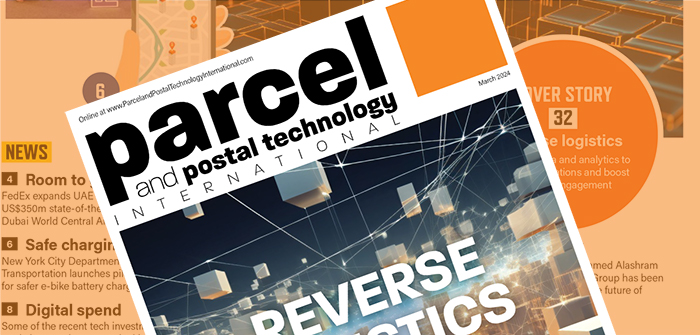As letter volumes continue to decline, maintaining the universal service obligation (USO) has become increasingly challenging. The USO, established in the late 1990s, is viewed as outdated in today’s environment where e-commerce and parcel delivery have surpassed traditional mail in demand.
To address this mismatch, it’s necessary to modernize the USO framework under the Postal Services Directive (PSD) to better meet current consumer and business needs. The current structure is criticized for placing a financial burden on national postal operators, which must maintain expansive networks and service levels despite the reduced demand for traditional mail services.
With no EU-led updates to the PSD, some member states have initiated revisions to their national postal regulations, focusing on the conditions surrounding the USO. Denmark, for example, has opted to not designate a universal service provider (USP), effectively moving away from the traditional USO model. Germany, Ireland and the Czech Republic have also undertaken similar efforts, often starting with consultations to align their USO with modern demands.
Outside the EU, countries like the UK and Switzerland have made significant progress in revising postal service regulations. The UK, post-Brexit, has the freedom to innovate, while Switzerland maintains a postal monopoly through Swiss Post for letter delivery. Norway’s Posten Bring has adapted to the digital age by transforming its mail operations, as highlighted here.
These national efforts reflect a growing consensus that the EU-wide PSD framework may no longer be adequate. Without a coordinated approach from the EU, member states are creating their own patchwork of regulations, which could prompt the EU to reconsider and modernize the PSD to ensure the USO remains sustainable, efficient and relevant.
This article builds on previous work, offering guidance to postal operators and stakeholders on increasing efficiency and making the USO more tenable. While transformation is crucial, it will not be enough to sustain the USO without long-term public financing.
Strategies for change
Several strategies are already being explored to improve postal operations, but more innovative approaches are necessary.
Legislative changes:
- USO review: Update delivery times for non-priority mail and consider alternate delivery days.
- Pension and healthcare reforms: Spread costs over a longer period to ease short-term financial pressure on postal operators.
- Regulatory flexibility: Facilitate easier procurement processes and allow for labor models aligned with commercial competitors.
Operational improvements:
- Energy-efficient vehicles: Low-emission vehicles reduce operational costs and environmental impact.
- Workforce and route optimization: Streamlining operations to save time and effort per item.
Service diversification:
- Financial services: Leverage postal networks to offer banking or financial services.
- E-commerce fulfilment: Support growing demand in online shopping with robust parcel services.
- Digital services: Expand into hybrid mail, secure electronic communication, cloud storage and electronic signatures.
- Retail services: Offer complementary products like mobile accessories at postal branches.
Cost Control:
- Property: Sell, lease, or share unused infrastructure to reduce costs.
- Shared services: Collaborate with government agencies to avoid duplication of services and reduce expenses.
- Sustainability initiatives: Implement energy-saving measures, such as solar panels and efficient lighting, especially where subsidies are available.
Innovative revenue streams:
- Advertising: Use postal vehicles and facilities for advertising.
- Market research: Leverage postal data to gather consumer insights.
- Data services: Provide address verification, geolocation and data-driven products for businesses and governments.
Partnerships:
- Public-private partnerships: Collaborate with private sector players, especially for shared infrastructure projects.
- Government programs: Partner with governments to offer services like tax payment, ID delivery, census data collection and voter registration through the postal network.
Transformative ideas
There are also two transformative ideas that could play a key role in maintaining the USO: differentiated service levels and a shift toward out-of-home (OOH) delivery models, such as pickup and drop-off points (PUDO) and lockers. Moving away from the ‘one size fits all’ approach to the USO, different groups of the population, such as urban and rural communities or elderly and disabled citizens, could receive tailored services.
Differentiating service levels for various groups would involve offering traditional door-to-door (D2D) delivery only for those with special needs, such as the elderly or people with disabilities. Regular, non-tracked mail could instead be serviced via OOH locations for most customers. This approach is particularly viable in markets with dense OOH networks, where consumers could easily access these points within walking distance in urban areas and convenient locations in rural areas.
The success of this concept relies on three key factors:
- Consumer acceptance: The experience from Poland, where lockers and PUDO services have gained popularity, shows that consumers prefer these options. In Poland, the net promoter score (NPS) for lockers has reached 80 points, much higher than traditional mail delivery services. With easy access, long opening hours (often 24/7) and proximity to consumers’ homes, OOH services can be an acceptable alternative to D2D delivery.
- Operational efficiency: Postal operators like InPost have demonstrated the operational efficiency of the OOH model, achieving high profit margins. With efficient networks and interactive delivery management (IDM) tools, first-time delivery rates exceed 99%. Creating specialized routes for OOH delivery and offering weekend services could enhance customer experience and make the OOH model more cost-effective.
- Ecological benefits: OOH delivery reduces traffic, noise pollution and carbon emissions, particularly in urban areas. Electric vehicles or cargo bikes could further enhance the environmental benefits of this model, making it both customer-friendly and sustainable.
Challenges and implementation
To implement this model successfully, all mail would need to be electronically tracked, enabling full visibility and interactive delivery options, especially for those with special needs. For postal operators, this would involve creating specialized OOH delivery routes, incentivizing postal workers for quality and efficiency and maximizing the use of infrastructure like lockers and PUDO points.
However, this transformation faces challenges – particularly the need for regulatory changes in the PSD. While some countries have already moved toward this model by differentiating between priority and non-priority mail, others have yet to follow. The OOH model also depends on having a dense network of access points, which is more feasible in developed markets with strong infrastructure.
Conclusion
The USO needs to evolve in response to changing consumer behavior and market conditions. By adopting innovative models like OOH delivery, postal operators can reduce costs, improve operational efficiency and enhance customer satisfaction. The transformation toward OOH, particularly in developed markets, can make the USO more tenable in the long term, offering a sustainable and efficient alternative to traditional mail delivery.
However, regulatory flexibility and stakeholder education are critical to realizing this vision and ensuring that the USO continues to serve the needs of all citizens in the digital age.
Read more about how postal operators are ushering in a new era of postal reform in the March 2024 issue of Parcel and Postal Technology International.



